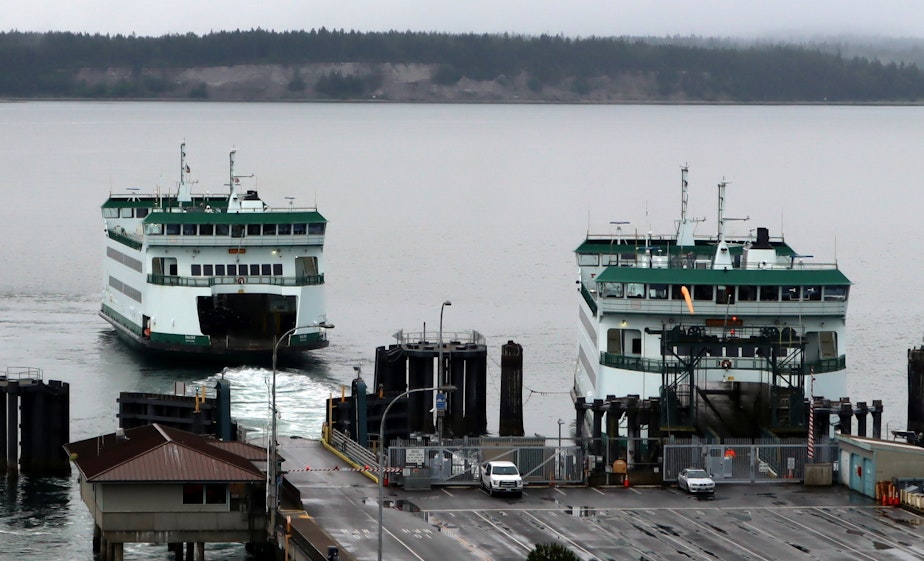Washington State Ferries confirms passenger fears: Service disruptions will continue for years

A perfect storm of increasing demand for ferry services, crew shortages, and an aging fleet means Washington ferry passengers will continue to see limited sailings and frequent cancellations over the next four to five years.
The latest “Service Contingency Plan” released this week by Washington State Ferries projects that the combined stress on the system means that service will be limited and potentially disrupted on multiple popular ferry routes until new vessels enter service in 2028.
The report, which comes on the heels of a more optimistic 2023 report, cites multiple stressors — including a fleet that has been reduced from 24 to 21 vessels in the last nine years and a “global shortage of mariners” — as the primary factors in the ongoing reduction of ferry service.
The plan details how the state will compensate for these factors over the next four to five years until new vessels can be built and added to the state fleet.
Sponsored
More than 1,000 ferry trips were cancelled during the three-month period from July to September 2023, according to the Washington State Department of Transportation. Of those, more than half, 60%, were due to a lack of crew.
WSF is launching a new recruitment campaign backed by $20 million in state funds that should increase staffing levels over the next 18 to 24 months.
But ferry riders will have to wait even longer for new vessels, despite a 2023 law that loosens restrictions and allows WSF to contract with out-of-state shipbuilders.
RELATED: Washington can now look to out-of-state shipbuilders for its next ferries
The current fleet of 21 vessels range from 5 to 64 years old. Half of the fleet is more than 30 years old.
Sponsored

According to the contingency plan, WSF needs an additional five vessels to “provide reliable service on every route as well as out of service time for necessary vessel inspection, maintenance and preservation work.”
RELATED: Our aging ferries want to retire
Until new vessels and additional crew are available, only 15 state ferries will be in operation as a baseline. The vessels will be assigned as follows to the existing service routes:
- Anacortes/San Juan Islands – Four vessels, including the Interisland (No Sidney service)
- Port Townsend/Coupeville – One vessel, year-round
- Mukilteo/Clinton – Two vessels
- Edmonds/Kingston – Two vessels
- Seattle/Bremerton – One vessel
- Seattle/Bainbridge – Two vessels
- Fauntleroy/Southworth/Vashon – Two vessels
- Point Defiance/Tahlequah – One vessel
Sponsored
If more vessels become available, WSF would prioritize adding a third vessel to the Fauntleroy/Southworth/Vashon route, a second vessel to the Seattle/Bremerton route, and a second vessel during the summer and shoulder seasons to the Port Townsend/Coupeville service.
The state had hoped to resume full service to the Southworth and Bremerton routes this year.

While the number of ferry passengers continues to increase toward pre-pandemic levels, state ferry officials acknowledged that they are unable to accommodate those customers the way they could before the pandemic.
“This puts pressure on the entire ferry system, as customers wait longer to board, crews work longer hours and frequent overtime, and unexpected service disruptions create ripple effects felt throughout the system,” the contingency plan states.

